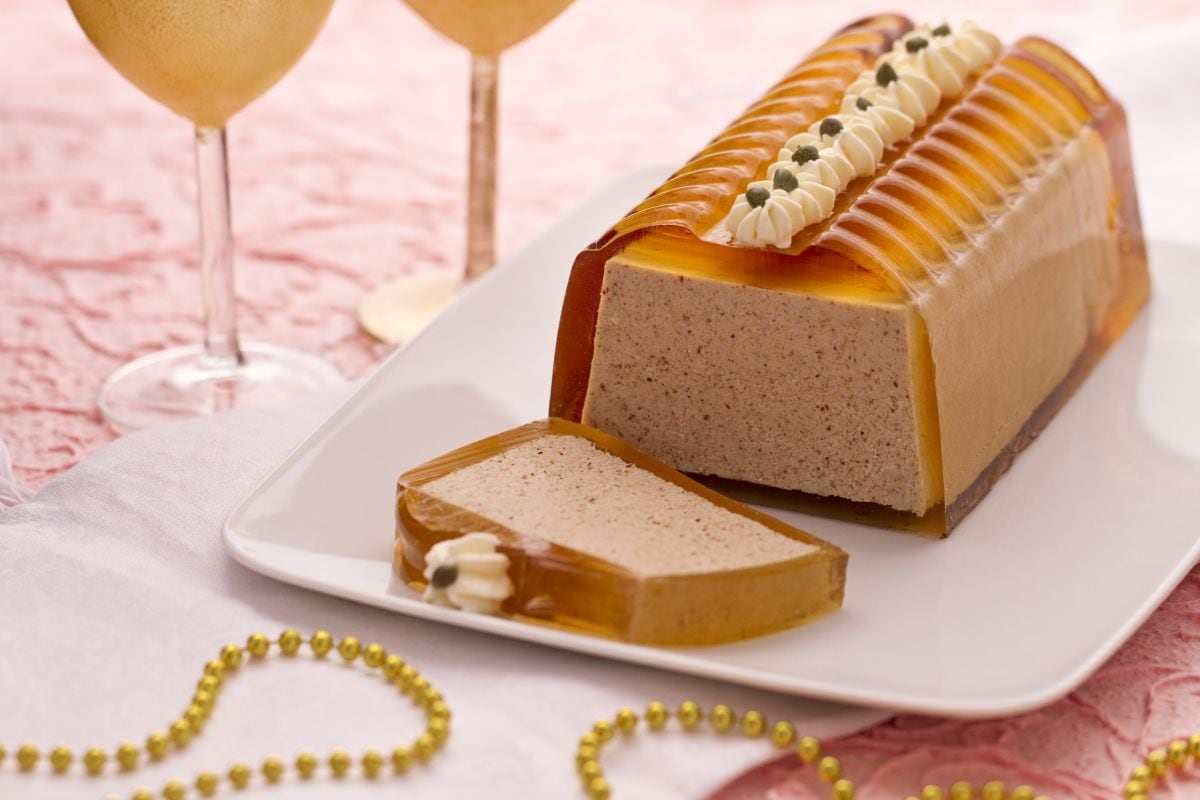Duck with Orange
- Average
- 2 h
- Kcal 171

Liver pâté is an undisputed delicacy of grand French cuisine, but it boasts ancient origins. In fact, goose liver pâté was already known by the Egyptians during the pharaohs' era. In a fresco from 2500 BC discovered in Saqqara, there is a scene depicting six Egyptians busy force-feeding geese; this practice was also common among the ancient Romans, who made it by mixing it with a blend of chopped dried figs, milk, and honey. Over time, foie gras reached its peak popularity among the French royals, particularly with Louis XV and Louis XVI, thanks to refined preparations like the exquisite "fatty liver pie in crust." In France, pâté de foie gras (fatty liver) is primarily made with goose (and duck) liver, force-feeding the animal with corn until its liver swells to ten times its normal size (hence its name). In Italy, liver pâté is often made using veal, pork, or chicken liver, simply because duck liver is not readily available in Italy, where ducks are not widely farmed. The production and consumption of liver pâté in Italy are mainly a prerogative of the central-northern regions.
Also try our Tuscan crostini with chicken liver pâté!

Chicken livers are generally sold in packages that also contain the hearts of the birds (you can see them in photo 1 in the bottom left), which we will not use for making the pâté; therefore, you will need to separate them (in photo 2, the liver is to the left of the blade and the heart to the right) and use them for another recipe. Wash the chicken livers, dry them, and clean them, taking care to remove excess fat and bile sacs; then cut them into pieces 3.

Chop the onions 4 and put 150 grams of butter and a drizzle of oil in a pan and let the onions soften 5, being careful not to let them brown. Then add the chopped liver 6, fresh marjoram, grated lemon zest, and sauté for a few minutes (if you like, you can replace fresh marjoram with bay leaves).

Pour Marsala and cognac into the pan to soften the ingredients 7 and let them evaporate over low heat 8. Adjust the mixture with salt and pepper and let it cool. Then put everything in a mixer and blend the mixture into a cream 9.

Melt the remaining butter over low heat and add it to the liver cream until the mixture becomes homogeneous 10. To prepare a liver pâté wrapped in gelatin, we will need two loaf pans: one slightly larger than the other that can contain it. Butter and line the smaller pan with plastic wrap 11 and pour the pâté inside 12.

Once the pâté is in the mold 13, let it rest in the refrigerator for a couple of hours until it sets well. Meanwhile, prepare the gelatin using one liter of water and 2 gelatin preparation cubes: pour half of the still-liquid gelatin into the larger mold 14 and let it set in the refrigerator for a couple of hours. After 2 hours, take out the smaller mold containing the pâté from the fridge, remove it from the mold by eliminating the plastic wrap 15.

Place the pâté in the center of the larger mold, which will have solidified gelatin at the bottom 16. There should be a gap between the pâté and the mold walls that will be filled with the remaining gelatin. Fill the space between the pâté and the mold with the liquid gelatin, covering the pâté's surface well 17. Put everything in the refrigerator and let it solidify for another two hours. When the gelatin is firm 18, wrap the mold with a hot cloth, then invert it onto a serving plate and garnish as desired with slices of pickles and disks of black and green olives, and capers.
Thanks to Accademia Mugnano for providing the molds.